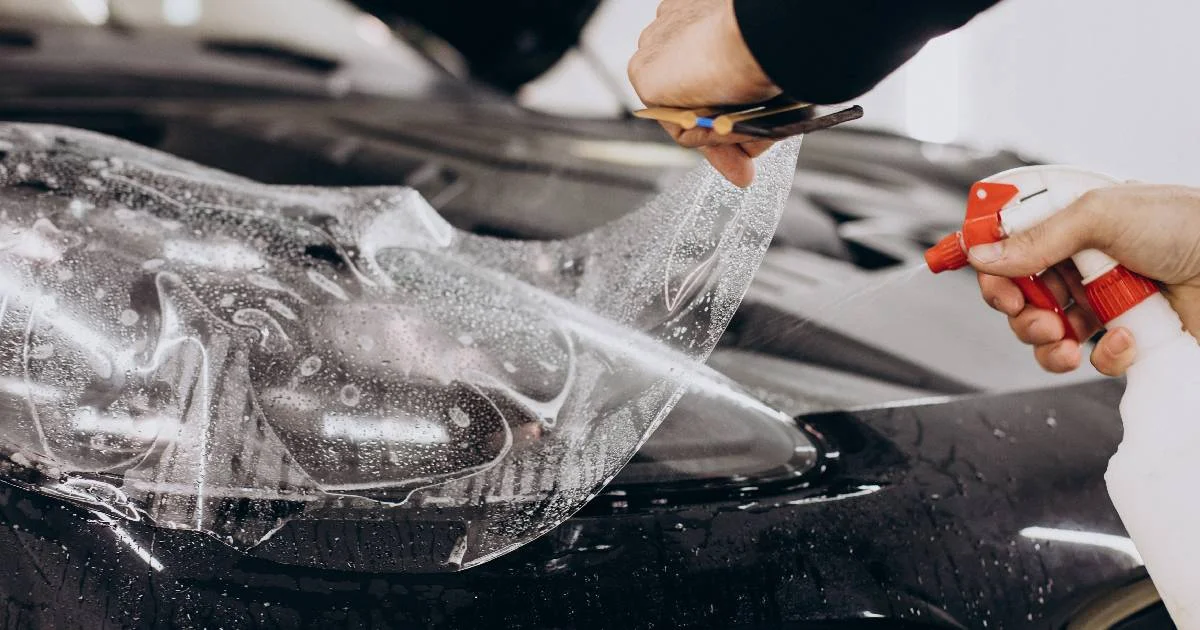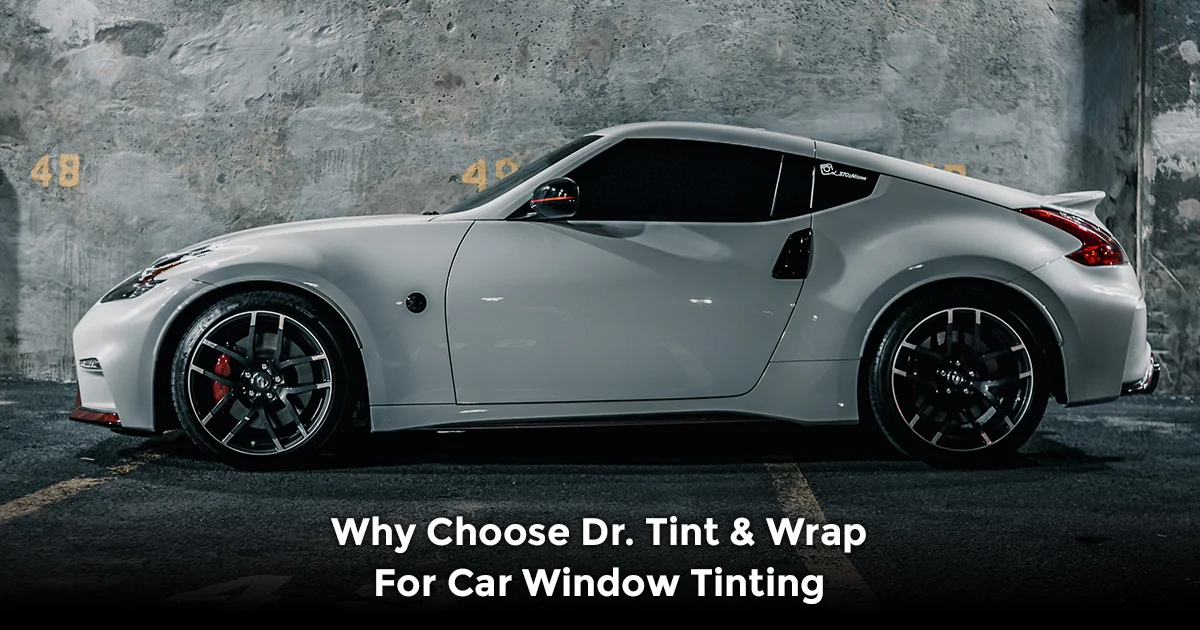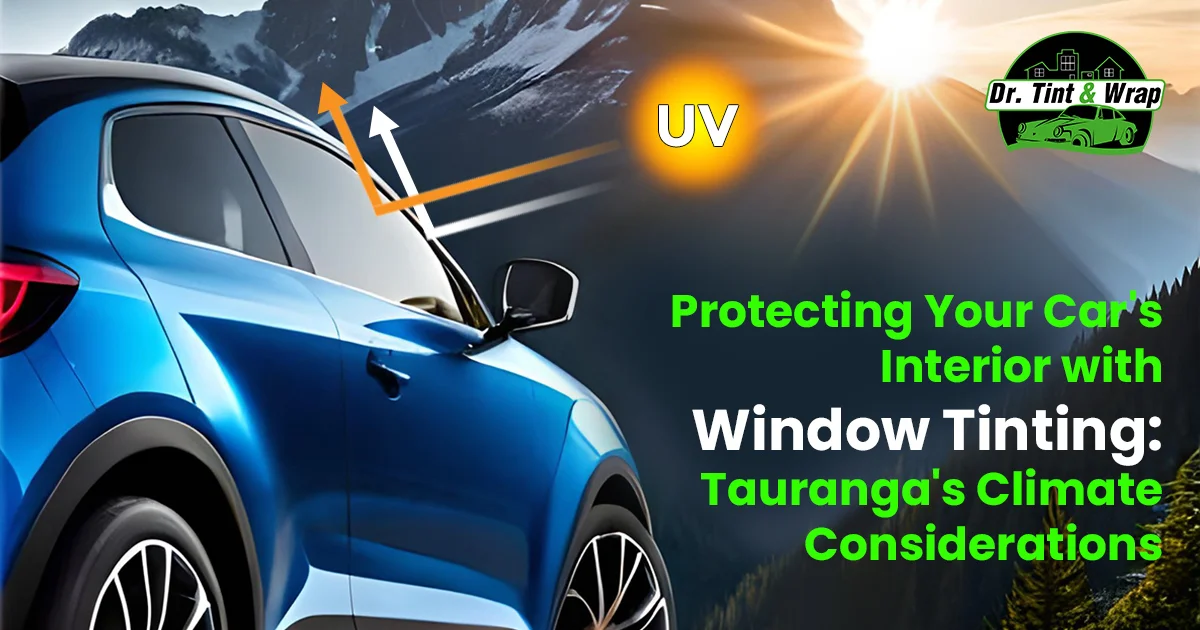
Why You Should Consider Home Window Tinting for Privacy ?
15 May 2023, By AdminPrivacy is a fundamental aspect of our daily lives. It allows us to feel safe, secure, and comfortable in our own homes. When it comes to windows, they are an essential part of any home, providing natural light, ventilation, and views of the outside world. However, they can also be a source of privacy concerns, especially if you live in a densely populated area or have windows facing a busy street. This is where home window tinting can come to the rescue. Home window tinting is a process that involves applying a thin film to your windows, which can help regulate the amount of sunlight that enters your home, while also providing privacy. In this blog post, we will explore the benefits of home window tinting for privacy and how to balance natural light and privacy needs.
Why is Privacy Important?
Privacy is important for several reasons. Firstly, it provides a sense of security and peace of mind. Knowing that you can enjoy your personal space without the prying eyes of others is crucial to feeling comfortable in your own home. Secondly, privacy protects your personal information and belongings from potential intruders. It also helps prevent identity theft and keeps your home safe from burglaries. Lastly, privacy allows you to have personal moments with your loved ones without feeling exposed to the outside world.
The Benefits of Home Window Tinting for Privacy
Home window tinting offers several benefits when it comes to privacy:
Enhanced Privacy: Window tinting films come in various opacities, ranging from translucent to opaque. This means you can choose a film that meets your privacy needs, allowing you to enjoy natural light while maintaining privacy. Tinted windows prevent outsiders from looking into your home, protecting your personal space.
Daytime Privacy: Home window tinting allows you to enjoy natural light during the day without compromising your privacy. You can go about your daily activities without feeling exposed to the outside world, making your home a more comfortable and private space.
Glare Reduction: Window tinting films can reduce glare caused by direct sunlight, making it easier to work on screens, watch TV, or simply relax without squinting or straining your eyes. This enhances your privacy by preventing outsiders from seeing what you are doing inside your home.
UV Radiation Protection: Home window tinting can block up to 99% of harmful UV rays from entering your home. UV rays can cause furniture, flooring, and other belongings to fade or deteriorate over time. Tinted windows help protect your belongings from UV radiation, prolonging their lifespan and ensuring privacy by preventing outsiders from seeing the inside of your home.
Energy Efficiency: Window tinting films can also help regulate the temperature inside your home, reducing the need for artificial cooling or heating. This can result in energy savings and lower utility bills. Additionally, energy-efficient windows can provide privacy by reducing the need for curtains or blinds, allowing you to enjoy natural light without sacrificing privacy.

How Much Does It Cost To Do Ppf On A Car ?
15 May 2023, By AdminIn the world of automotive enthusiasts and meticulous car owners, the quest for preserving a vehicle's pristine appearance often leads to the consideration of Paint Protection Film (PPF). Hamilton, with its vibrant automotive culture, has seen an increased interest in this cutting-edge technology. As car owners seek ways to shield their beloved vehicles from the rigors of daily driving and environmental hazards, understanding the costs associated with PPF becomes crucial. In this guide, we'll delve into the factors influencing the cost of PPF in Hamilton and provide insights into the value it offers.
What is Paint Protection Film?
Paint Protection Film, often referred to as PPF, is a transparent polyurethane film applied to the exterior surfaces of a vehicle to protect the paint from stone chips, bug splatter, bird droppings, road debris, and other environmental contaminants. It acts as an invisible shield, preserving the car's finish and maintaining its resale value
Factors Influencing PPF Costs in Hamilton
- Type and Quality of Film: The market offers various types and qualities of PPF, ranging from basic films to high-end, self-healing varieties. The cost of PPF can vary significantly based on the brand, thickness, and features of the film. Premium films may have a higher upfront cost but provide superior protection and durability.
- Size and Complexity of the Vehicle: Larger vehicles or those with complex body contours may require more PPF material and additional labor for installation. Sports cars, luxury vehicles, and SUVs typically have larger surface areas, influencing the overall cost.
- Installation Labor Costs: The skill and experience of the installer play a crucial role in the cost of PPF. Hamilton boasts several skilled professionals and their expertise may be reflected in the labor costs. However, choosing a reputable installer is essential to ensure proper application and optimal protection.
- Coverage Areas: Car owners can choose specific areas for PPF coverage, such as the full front end, hood, fenders, side mirrors, and more. The more extensive the coverage, the higher the overall cost. Some opt for a full-body wrap for comprehensive protection.
- Customization and Design: Some PPF installations involve customization, such as patterns, logos, or unique designs. These personalized touches can add to the overall cost but allow for a one-of-a-kind look while maintaining protection.
- Warranty and Aftercare: High-quality PPF often comes with extended warranties. The length and terms of the warranty can impact the upfront cost but provide peace of mind for car owners. Additionally, factoring in aftercare products for maintenance is essential to ensure the film's longevity.
How much does PPF typically cost in Hamilton?
The cost of PPF installation in Hamilton can vary based on several factors, including the size and model of your vehicle, the type of PPF used, and the complexity of the installation. On average, PPF Prices start from $1150. It's advisable to obtain quotes from reputable PPF installers in Hamilton for accurate pricing based on your specific car.
Investing in Paint Protection Film for your car in Hamilton is a strategic decision to safeguard your vehicle's aesthetics and resale value. The costs associated with PPF vary based on factors like the type of film, the size of the vehicle, labor, and customization options. While the initial investment may seem significant, the long-term benefits in terms of paint preservation and overall appearance make PPF a worthwhile consideration for car enthusiasts and those looking to protect their automotive investments in the vibrant city of Hamilton.

Why Choose Dr. Tint & Wrap For Car Window Tinting
15 May 2023, By AdminDr. Tint & Wrap is a well-known and reputable company that provides car window tinting services in Hamilton, Rotorua & Tauranga. We specialize in Car Window Tinting services and are known for our high-quality workmanship and customer service.
At Dr. Tint & Wrap we have become experts in the field of car window tinting and use only the highest quality materials as per the government norms. We have a team of skilled and experienced technicians who are trained to provide precise and professional installations. This means that you can trust that your car's windows will be tinted to the highest standard.
Dr. Tint & Wrap also offers a wide range of tinting options to suit your individual needs and offers a variety of tint shades, from light to dark, so you can choose the level of privacy and UV protection that suits you best In addition to our high-quality workmanship and range of tinting options. Dr. Tint & Wrap also provides excellent customer service. We also feel proud to provide personalized service to each of our customers and will work with you to find the best tinting solution for your individual needs.
For your car window tinting needs in Hamilton, Rotorua and Tauranga our commitment to sustainability is a reflection of our dedication to providing high-quality services that are in line with modern car standards.
In conclusion, Dr. Tint is an excellent choice for car window tinting services in Hamilton, Rotorua & Tauranga. With an over wide range of tinting options, excellent customer service, and a commitment to sustainability, we are a trusted and reputable company that you can count on for all your car window tinting needs.

Protecting Your Car's Interior with Window Tinting: Tauranga's Climate Considerations
15 May 2023, By AdminWhen it comes to protecting your car's interior, investing in window tinting is an excellent choice. Not only does it enhance your vehicle's appearance, but it also provides numerous benefits, especially in a city like Tauranga, where the climate can be intense. In this article, we will explore the advantages of car window tinting and discuss why it's crucial to consider Tauranga's climate when choosing the right tint for your car.
1. Preserving Your Car's Interior
Tauranga's climate, known for its sunny and hot summers, can take a toll on your car's interior. The constant exposure to harsh UV rays can cause fading, cracking, and discoloration of your car's upholstery, dashboard, and other interior components. Car window tinting acts as a protective shield, blocking up to 99% of harmful UV rays, thereby preserving the integrity and aesthetics of your vehicle's interior.
2. Heat Reduction
During Tauranga's scorching summers, the inside of your car can become unbearably hot, making it uncomfortable for both you and your passengers. Window tinting helps in minimizing heat build-up by blocking a significant amount of solar energy. By reducing the amount of heat that enters your vehicle, window tinting keeps the interior cooler, making your driving experience much more pleasant.
3. Glare Reduction and Enhanced Visibility
Glare from the sun can be a major distraction while driving, increasing the risk of accidents. Car window tinting reduces glare by effectively filtering the amount of light entering your vehicle. With reduced glare, you'll experience enhanced visibility, especially during sunrise, sunset, and bright sunny days, allowing you to focus better on the road and ensure a safer driving experience.
4. Privacy and Security
Window tinting adds an extra layer of privacy and security to your vehicle. It prevents prying eyes from easily seeing the contents of your car, reducing the chances of theft or break-ins. Additionally, if your window is ever shattered, the tint film helps hold the glass together, minimizing the risk of shattered glass shards inside the vehicle.
5. Protecting Your Health
The harmful UV rays that penetrate through windows not only damage your car's interior but can also pose health risks to you and your passengers. Prolonged exposure to UV rays can lead to skin damage, premature aging, and even an increased risk of skin cancer. Car window tinting acts as a sunscreen for your vehicle, protecting you and your loved ones from these harmful rays, and ensuring a safer and healthier driving environment.
Car window tinting is an essential investment for any vehicle owner in Tauranga, given the city's climate and the potential hazards it presents. By opting for window tinting, you can protect your car's interior from fading, cracking, and discoloration, while also enjoying the benefits of reduced heat, glare, increased privacy, and enhanced security. Moreover, the added protection against harmful UV rays ensures a safer and healthier driving experience for you and your passengers.
When considering car window tinting, it's crucial to consult a professional tinting service that can provide guidance based on Tauranga's climate and local regulations. Dr. Tint & Wrap is locally owned and specializes in car window tinting, offering top-quality services in Tauranga. Their expert tinting solutions effectively protect your car's interior while providing the best window tinting options available. By choosing the right tint and having it professionally installed, you can enjoy all the advantages while complying with the laws. Invest in car window tinting today with Dr. Tint & Wrap and safeguard your vehicle's interior, comfort, and overall driving experience in Tauranga's challenging climate.
